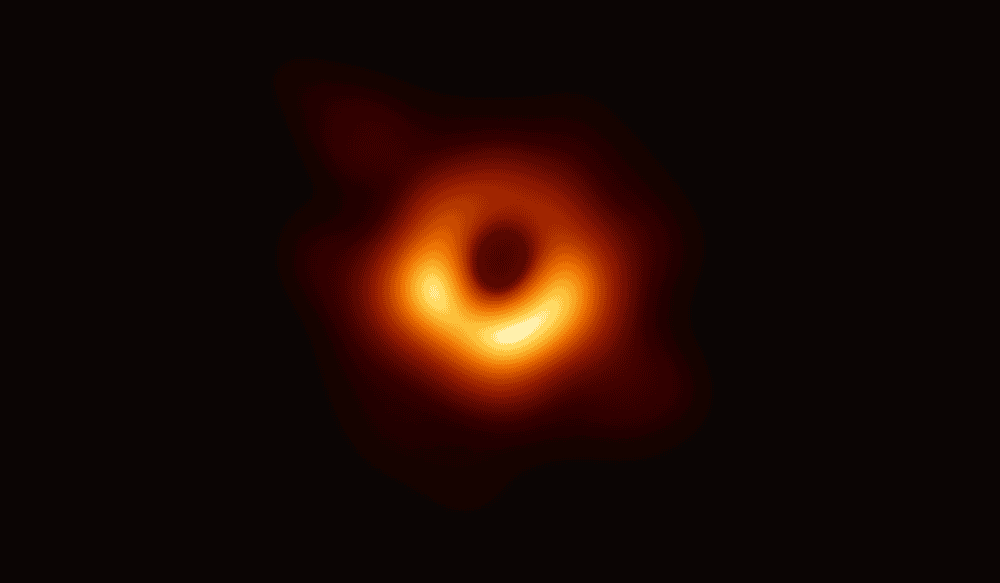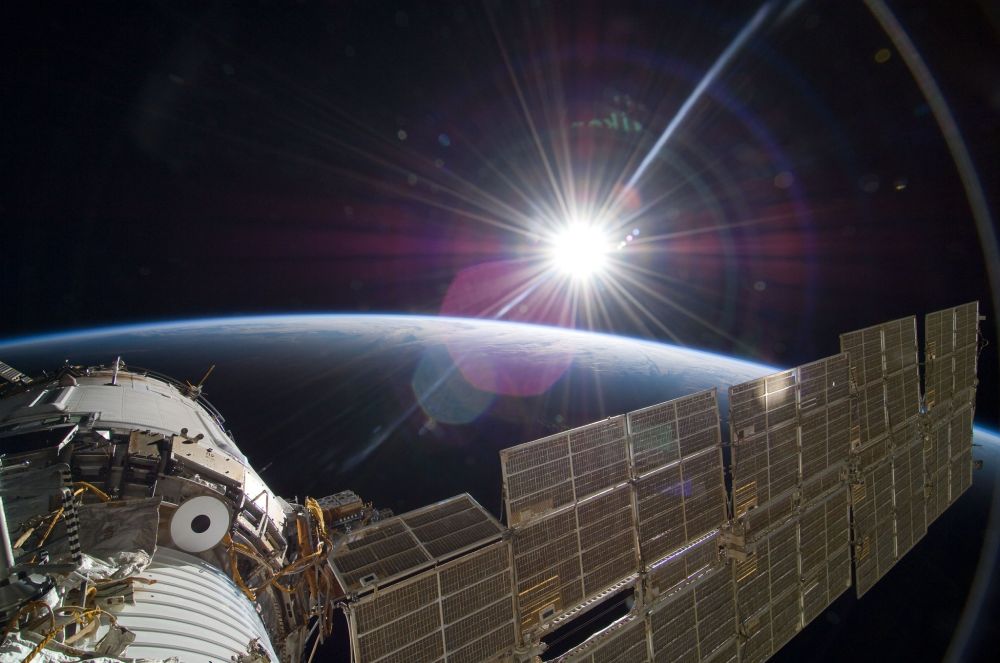
[Image above] A black hole is the ultimate example of blackness—everything that comes too close gets sucked in and disappears. How did researchers manage to take a picture of something that is essentially invisible? Credit: The Event Horizon Telescope
The year is 2014. As the lights dim and the movie starts, you munch on popcorn and sip your soda and watch as Interstellar takes you to a galaxy far beyond our own. And in this far-away galaxy, 12 potentially habitable worlds could prove humankind’s salvation. There is just one catch—they are all located near a giant black hole.

Gargantua, the fictional black hole that plays a central role in the 2014 movie Interstellar. Credit: Warner Bros. UK, YouTube
At the time Interstellar came out, we had never seen a real black hole before—which is not surprising. A black hole is a region of spacetime that exhibits such strong gravitational effects that nothing—not even light—can escape (according to a classical understanding, anyway). A black hole represents the ultimate blackness, the ultimate nothing—trying to see a black hole is like looking for a vampire’s reflection in a mirror.
But if we take a page from an artist’s playbook and look for the negative space around the black hole rather than the black hole itself, then it may be possible to picture what a black hole looks like based on how it affects the surrounding area.
Imaging a black hole’s “shadow”
This idea of negative space—looking for the “shadow” of the black hole—is what scientists at the Event Horizon Telescope (EHT) Collaboration used as the foundation for their project. They aimed to capture the first image of a black hole by training their telescopes to look for the event horizon rather than the black hole itself.
The event horizon marks the region between a black hole and its surrounding accretion disk (a band of matter that is close to, but not quite inside, a black hole). As matter in the accretion disk gets pulled closer and closer toward the black hole, it eventually enters the event horizon, a place where photons and particles start to bend inexorably toward the black hole.
At the event horizon, everything begins to move faster and becomes superheated (matter turns into gas and plasma). At that time, plasma jets and photons are ejected in a final escape from the black hole’s pull. (What are the exact mechanisms behind this phenomenon? That question is still open to debate, and researchers are actively studying possibilities.)
This final ejection of photons and plasma before the black hole pulls everything in creates the appearance of a bright ring around the black hole. And the photons escaping during this process are what the EHT Collaboration’s eight ground-based radio telescopes were calibrated to detect.

The real black hole image looks very similar to the fictional black hole in Interstellar. But why does the real black hole appear to have no ring? This Gizmodo article by Ryan F. Mandelbaum has the answer. Credit: The Event Horizon Telescope
On April 10, 2019, the EHT Collaboration released the first images of a real black hole to the world, accompanied by six papers detailing specifics of the breakthrough.
EHT Science Council chair Heino Falcke, professor of astrophysics at Radboud University in the Netherlands, explains in the EHT press announcement exactly what you see in the photo.
“If immersed in a bright region, like a disc of glowing gas, we expect a black hole to create a dark region similar to a shadow—something predicted by Einstein’s general relativity that we’ve never seen before,” he says. “This shadow, caused by the gravitational bending and capture of light by the event horizon, reveals a lot about the nature of these fascinating objects and allowed us to measure the enormous mass of M87’s black hole.”
The video below, released by the European Southern Observatory, gives you an idea of just how far away the M87 black hole is from Earth—a whopping 55 million light-years! And just how large is the black hole? A recent xkcd comic by author Randall Munroe puts the black hole’s size into perspective nicely with the use of another astrophysics milestone—the escape of the Voyager spacecraft to interstellar space.

Credit: European Southern Observatory, YouTube
Creating the algorithm
More than 200 researchers were involved with imaging this black hole, but one researcher in particular has received a lot of attention—Katie Bouman.
Bouman, an assistant professor of computing and mathematical sciences at the California Institute of Technology, became involved with EHT as a graduate student at the Massachusetts Institute of Technology. She led the creation of CHIRP (Continuous High-resolution Image Reconstruction using Patch priors), an algorithm that combined data from the eight radio telescopes and turned that data into a cohesive image.
In 2016, then-graduate student Bouman gave a TEDx Talk on how CHIRP works. And I must say, her comparison of the telescope array to a disco ball is about as ingenious as the algorithm itself!

Credit: TEDx Talks (Katie Bouman), YouTube
Author
Lisa McDonald
CTT Categories
- Aeronautics & Space
Spotlight Categories
- Member Highlights


